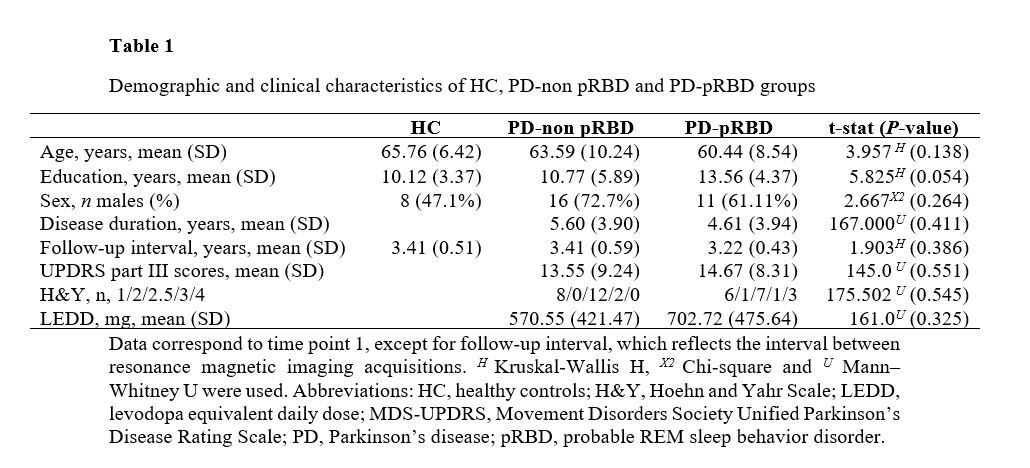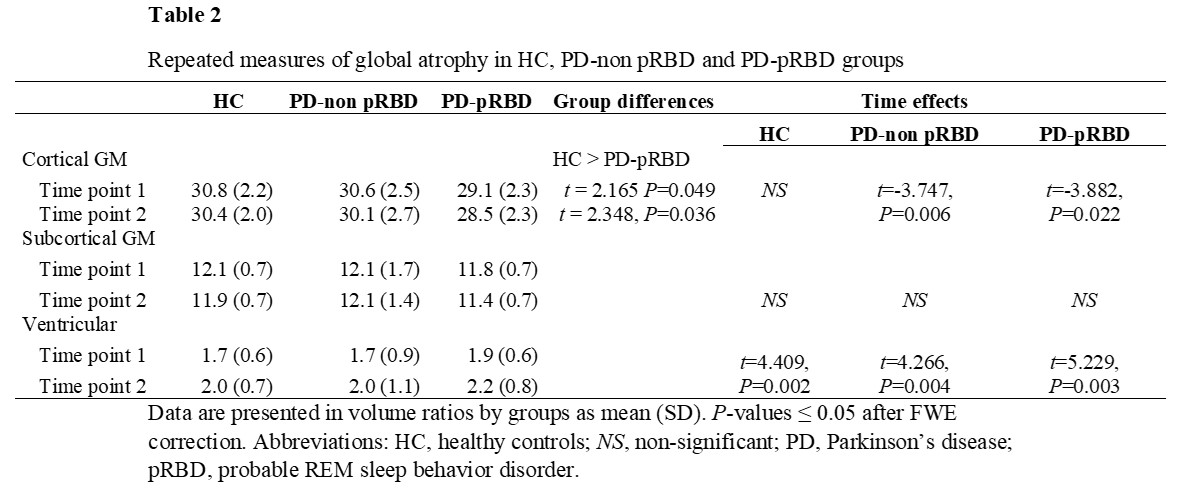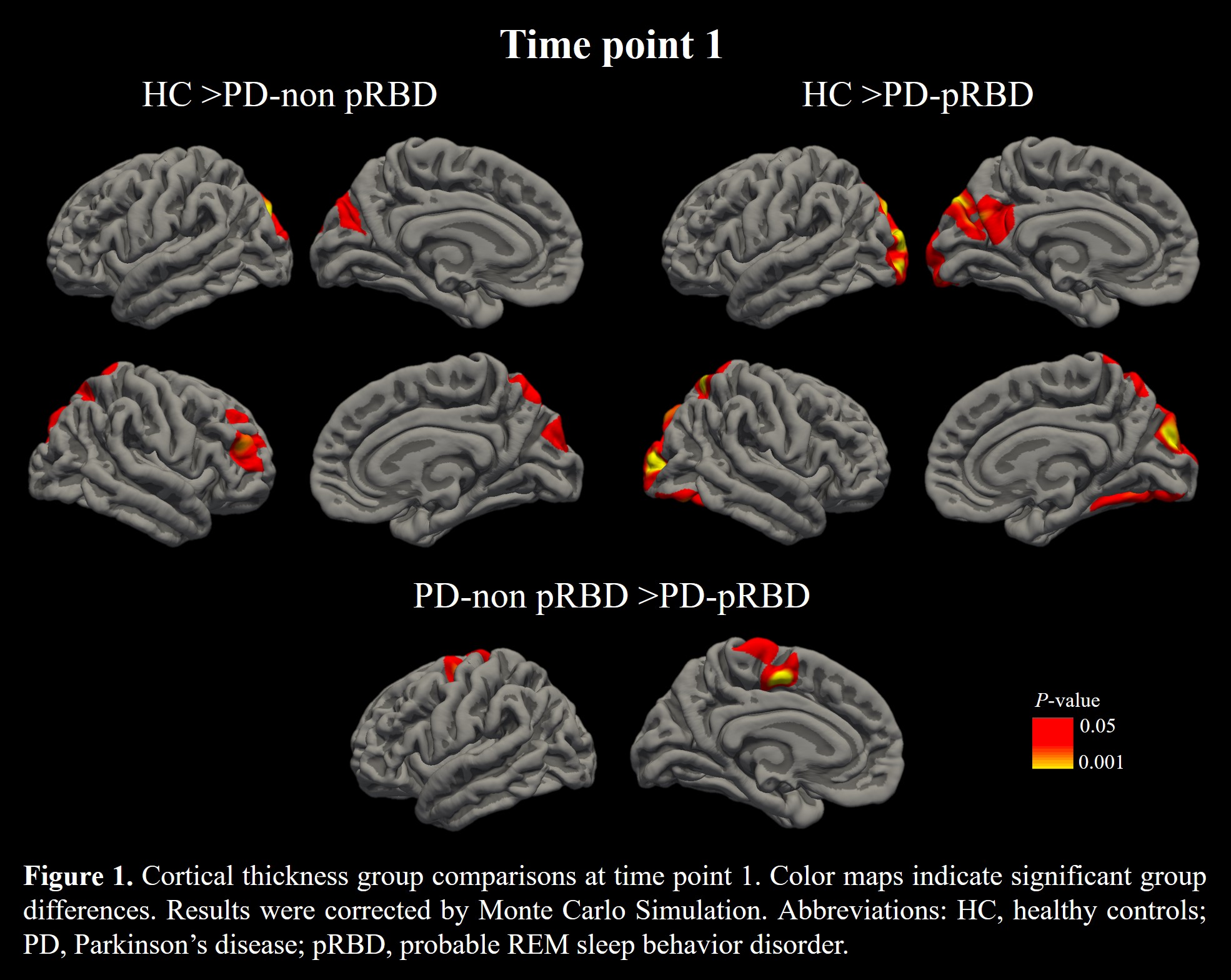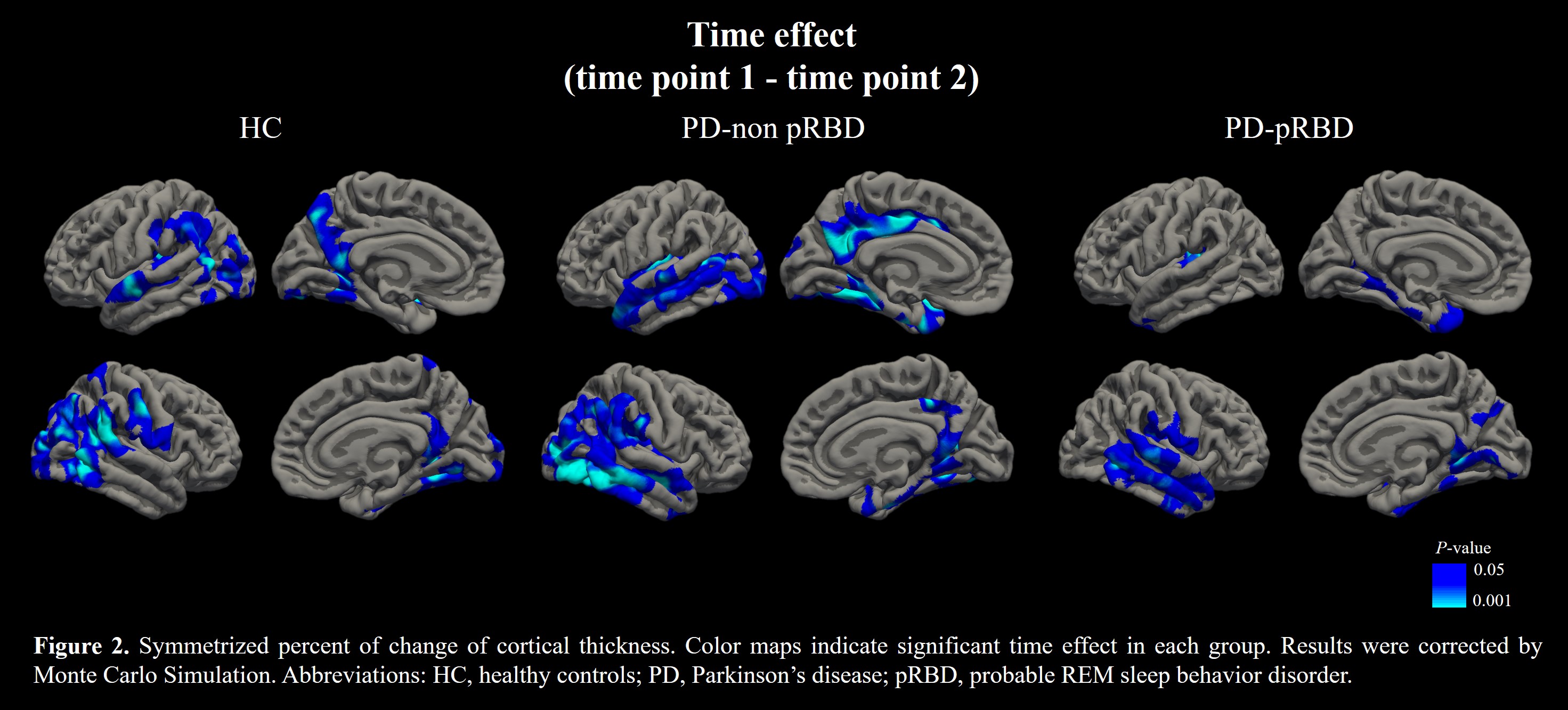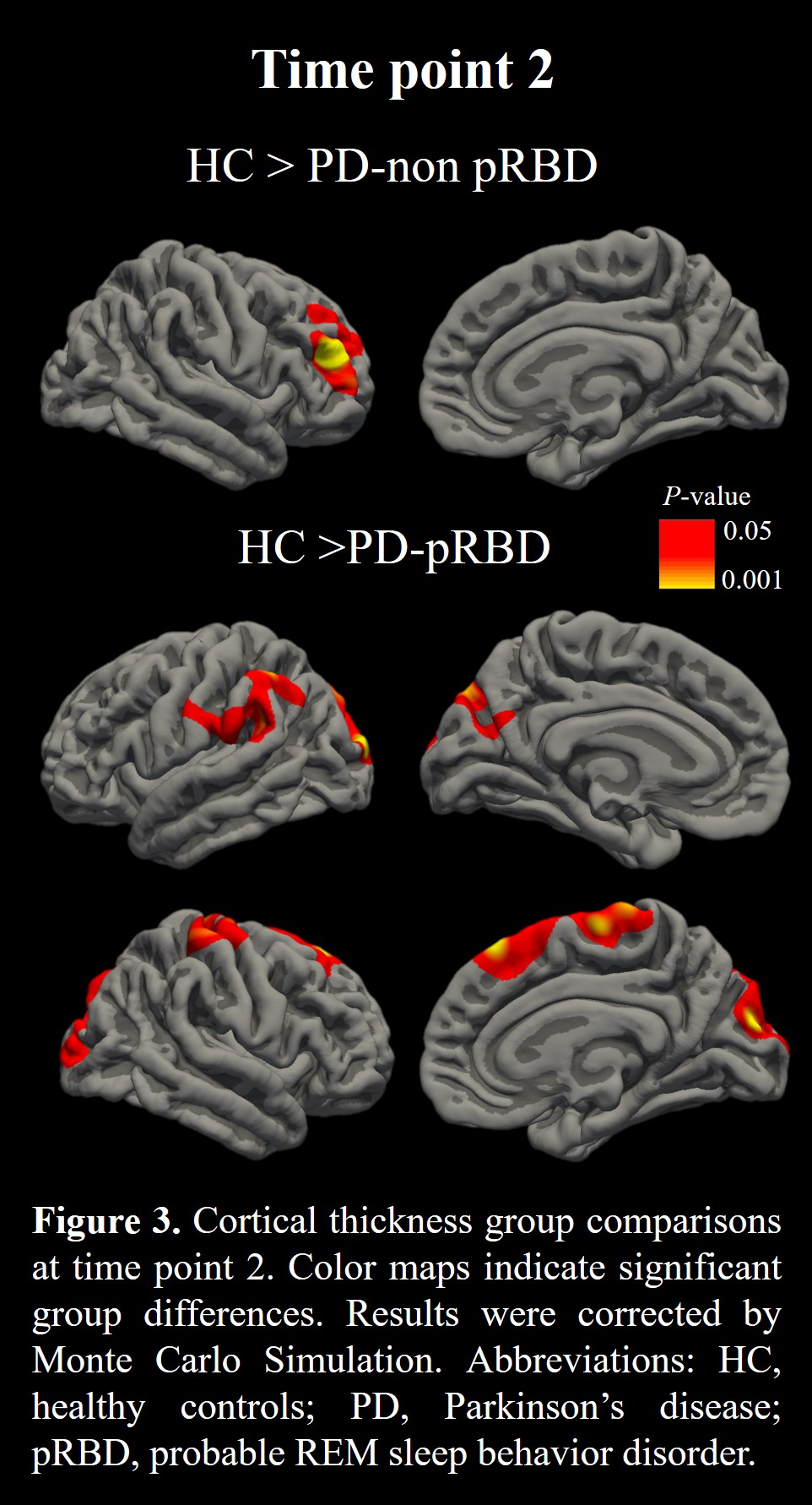Category: Parkinson's Disease: Neuroimaging
Objective: To explore 3-year cortical thickness (CTh) and global atrophy progression in treated Parkinson’s disease (PD) with probable REM sleep behavior disorder (RBD).
Background: Parkinson’s disease with RBD has been associated with reduced gray matter (GM) and global atrophy measures [1]. Nevertheless, few studies have studied the progression of this clinical subtype [2]. In this context, a previous report revealed left insula thinning and basal ganglia volume reductions in de novo PD with probable RBD (pRBD) between baseline and 2-year follow-up [3]. Nevertheless, no previous studies have investigated structural brain changes in non-demented advanced PD-pRBD patients.
Method: We analyzed data from 18 PD-pRBD, 22 PD-non pRBD patients, and 17 healthy controls [table1] who underwent baseline and follow-up structural MRI acquisitions (3.4±0.5 year apart). Patients were classified according to their Innsbruck RBD Inventory responses at follow-up [4]. The longitudinal FreeSurfer pipeline was applied to obtain vertex-wise cortical thickness maps and global atrophy measures [5]. General linear models were used to analyze vertex-wise CTh and global atrophy measures at each time point and longitudinally.
Results: At baseline, CTh comparisons between PD groups and controls revealed cortical thinning in both groups in the posterior cortex. In addition, the PD-pRBD group also showed thinner superior frontal cortex compared with PD-non pRBD [figure1]. There is cortical thinning in patients and controls over time [figure2] without significant interaction effect. At time 2, CTh comparisons between PD-pRBD and controls showed bilateral thinning in the left lateral occipital, left supramarginal, right superior frontal and cuneus cortices, whereas PD-non pRBD only showed rostral middle frontal thinning in comparison to controls [figure3]. Global atrophy analyses showed reduced cortex volume in PD-pRBD compared with controls at baseline and follow-up [table2]. Both PD groups showed a significant cortex volume reduction over time, and all groups had a significant ventricular system enlargement without significant interaction effect [table2].
Conclusion: Our exploratory findings add evidence that the presence of RBD symptomatology is related to a more severe PD phenotype characterized by pronounced cortical atrophy. But results also suggest these differences between PD patients become less evident over time.
References: 1. Matzaras R, Shi K, Artemiadis A, et al. Brain Neuroimaging of Rapid Eye Movement Sleep Behavior Disorder in Parkinson’s Disease: A Systematic Review. J Parkinsons Dis. 2022;12(1):69-83. doi:10.3233/JPD-212571
2. Ye G, Xu X, Zhou L, Zhao A, Zhu L, Liu J. Evolution patterns of probable REM sleep behavior disorder predicts Parkinson’s disease progression. NPJ Parkinsons Dis. 2022;8(1):36. Published 2022 Apr 5. doi:10.1038/s41531-022-00303-0
3. Yoon EJ, Monchi O. Probable REM sleep behavior disorder is associated with longitudinal cortical thinning in Parkinson’s disease. NPJ Parkinsons Dis. 2021;7(1):19. Published 2021 Mar 2. doi:10.1038/s41531-021-00164-z
4. Frauscher B, Ehrmann L, Zamarian L, et al. Validation of the Innsbruck REM sleep behavior disorder inventory. Mov Disord. 2012;27(13):1673-1678. doi:10.1002/mds.25223
5. Reuter M, Schmansky NJ, Rosas HD, Fischl B. Within-subject template estimation for unbiased longitudinal image analysis. Neuroimage. 2012;61(4):1402-1418. doi:10.1016/j.neuroimage.2012.02.084
To cite this abstract in AMA style:
J. Oltra, A. Campabadal, C. Uribe, J. Pardo, I. Roura, MJ. Martí, Y. Compta, F. Valldeoriola, N. Bargallo, A. Iranzo, C. Junque, B. Segura. Cortical thickness and global atrophy progression in Parkinson’s disease with probable RBD [abstract]. Mov Disord. 2023; 38 (suppl 1). https://www.mdsabstracts.org/abstract/cortical-thickness-and-global-atrophy-progression-in-parkinsons-disease-with-probable-rbd/. Accessed December 24, 2025.« Back to 2023 International Congress
MDS Abstracts - https://www.mdsabstracts.org/abstract/cortical-thickness-and-global-atrophy-progression-in-parkinsons-disease-with-probable-rbd/

